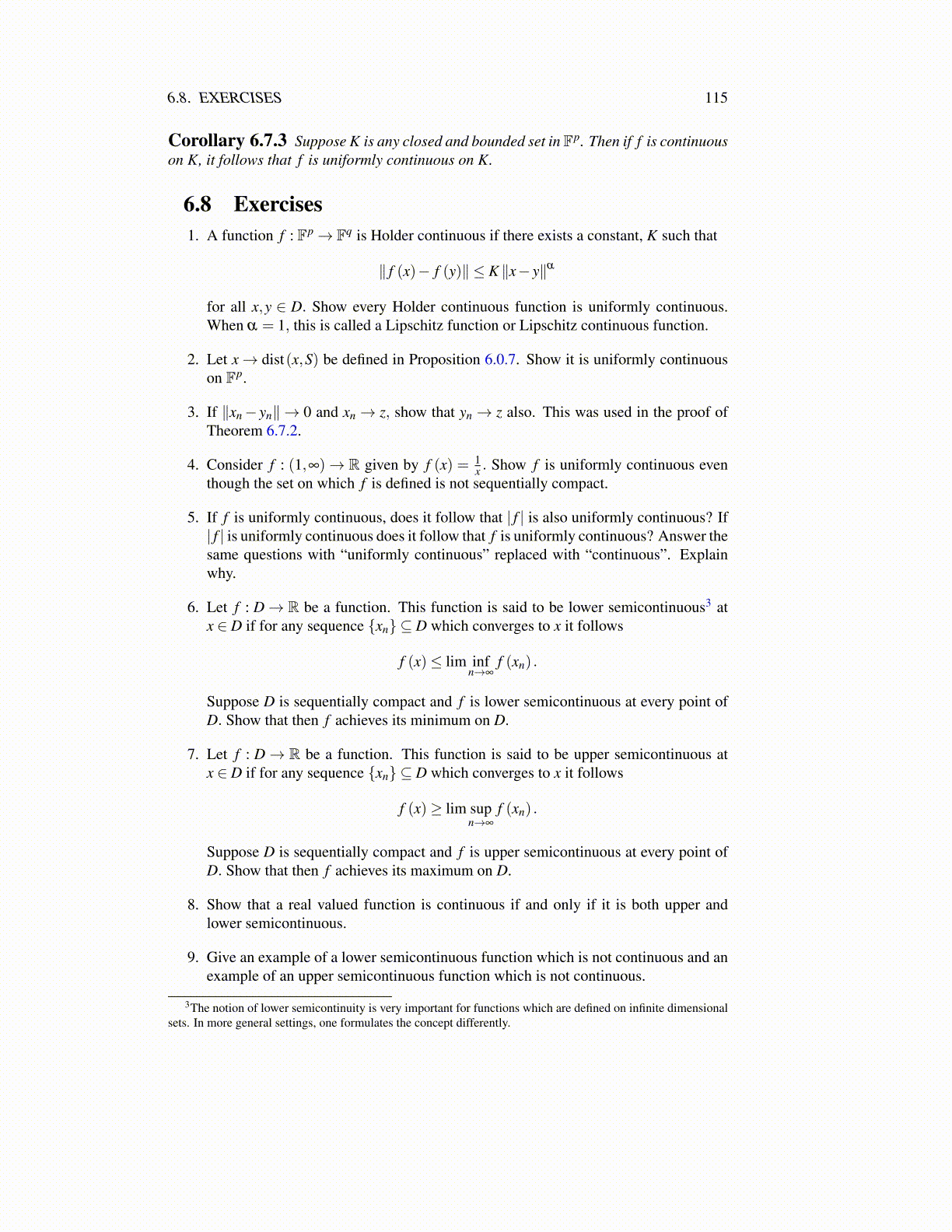
6.9. SEQUENCES AND SERIES OF FUNCTIONS 115
In this example, | fn (x)| ≤ 1n so this function is close to 0 for all x at once provided n is
large enough. There is a difference between the two examples just given. They both involvepointwise convergence, but in the second example, the pointwise convergence happens forall x at once. In this example, you have uniform convergence.
Definition 6.9.6 Let { fn} be a sequence of functions defined on D. Then { fn} issaid to converge uniformly to f if it converges pointwise to f and for every ε > 0 thereexists N such that for all n≥ N, supx∈D | f (x)− fn (x)|< ε
The following picture illustrates the above definition.
The dashed lines define a small tube centered about the graph of f and the graph of thefunction fn fits in this tube for all n sufficiently large. In the picture, the function f is beingapproximated by fn which is very wriggly.
The reason uniform convergence is desirable is that it drags continuity along with it andimparts this property to the limit function.
Theorem 6.9.7 Let { fn} be a sequence of functions defined on D which are contin-uous at z and suppose this sequence converges uniformly to f . Then f is also continuous atz. If each fn is uniformly continuous on D, then f is also uniformly continuous on D.
Proof: Let ε > 0 be given and pick z∈D. By uniform convergence, there exists N suchthat if n > N, then for all x ∈ D,
| f (x)− fn (x)|< ε/3. (6.1)
Pick such an n. By assumption, fn is continuous at z. Therefore, there exists δ > 0 suchthat if |z− x|< δ then | fn (x)− fn (z)|< ε/3. It follows that for |x− z|< δ ,
| f (x)− f (z)| ≤ | f (x)− fn (x)|+ | fn (x)− fn (z)|+ | fn (z)− f (z)|< ε/3+ ε/3+ ε/3 = ε
which shows that since ε was arbitrary, f is continuous at z.In the case where each fn is uniformly continuous, and using the same fn for which 6.1
holds, there exists a δ > 0 such that if |y− z| < δ , then | fn (z)− fn (y)| < ε/3. Then for|y− z|< δ ,
| f (y)− f (z)| ≤ | f (y)− fn (y)|+ | fn (y)− fn (z)|+ | fn (z)− f (z)|< ε/3+ ε/3+ ε/3 = ε
This shows uniform continuity of f .
Definition 6.9.8 Let { fn} be a sequence of functions defined on D. Then the se-quence is said to be uniformly Cauchy if for every ε > 0 there exists N such that wheneverm,n≥ N, supx∈D | fm (x)− fn (x)|< ε .